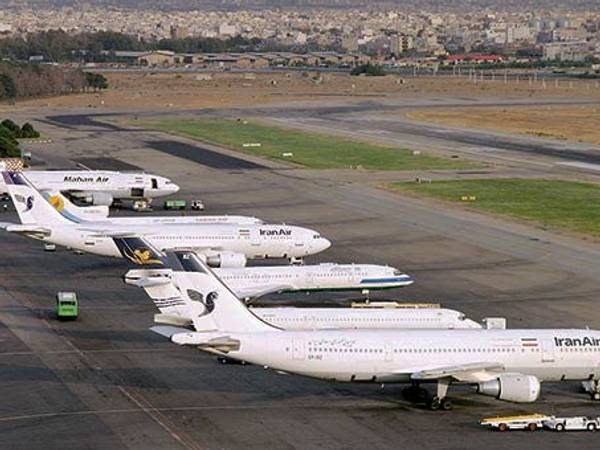Iran is set to increase the price of aviation fuel, a move that could significantly impact airfares for domestic flights while the government is testing waters for raising regular gasoline prices.
According to the head of Iran’s Airlines Association, the government’s proposed budget for the next Iranian year (which starts March 21) includes a plan to raise fuel costs for airlines from 6,000 rials (less than one US cent) to 70,000 (about 10 cents), potentially leading to higher operating costs and, consequently, higher ticket prices for passengers.
Airlines in Iran receive heavily subsidized fuel, which contributes to lower ticket prices. The aviation fuel is subsidized more than twice as much as gasoline and diesel sold for passenger cars, buses and trucks.
Even with such cheap fuel, most Iranians cannot afford to buy flight tickets. The average cheapest domestic return ticket for one person costs between 40,000,000 and 60,000,000 rials, roughly half of a typical wage earner's monthly salary. One US dollar currently trades for almost 700,000 rials.
However, the government now aims to reduce this subsidy and increase revenue.
Maghsoud Asadi Samani said that the 11-fold raise means the impact of the each liter of aviation fuel on the total cost per seat hour will increase from 240,000 rials (about 34 cents) to 2,800,000 rials (about $4).
Last month, as President Masoud Pezeshkian presented his government’s first budget outline to the parliament, he told lawmakers that the production cost of each liter of gasoline—excluding crude oil—stands at approximately 80,000 rials (about 11 US cents). Furthermore, imported gasoline costs between 300,000 and 400,000 rials per liter (about 40 to 60 US cents).
Speculation is mounting over a potential gasoline price hike, as the government wavers on implementing these politically charged plans.
In response to comments by some lawmakers that the budget bill includes a 40% increase in gasoline prices, the spokesperson of the Planning and Budget Organization recently said: "There is no provision for a gasoline price hike in the 1404 budget.”
Mojgan Khanlou noted that the budget and budgeting system in Iran are fundamentally not the place to set gasoline prices. "Setting the prices of petroleum products requires decision-making at the highest levels of national management, and any adjustment or pricing needs to be discussed thoroughly across various levels."
She added, "The policy of the Planning and Budget Organization is that any adjustment in this area should be made with collective consensus, and the government’s proposed budget has avoided sudden changes and shock decisions that could impact other markets."
However, lawmakers argue that although there is no specific mention about raising fuel prices, the government has envisioned a significant rise in its revenues from fuel sales.
Hossein Samsami, a member of parliament's economic committee, said this week that the upcoming budget projects over 200 trillion rials (about $300 million) in revenue from gasoline sales, which could lead to a 40% increase in gasoline prices.
Iran's heavily subsidized gasoline costs just 2 cents per liter (or less than 10 cents per gallon), making it one of the cheapest in the world. However, this subsidy comes at a steep price for the government, which spends billions annually to sustain it.
For most Iranians, who earn about $200 per month, a large increase could push an already struggling population to the brink. Violent protests shook Iran in November 2019, when the government suddenly tripled gasoline prices.
On Monday, the CEO of the National Iranian Oil Products Distribution Company, Keramat Veis-Karami, announced a record-breaking surge in gasoline consumption in the Iranian month of Shahrivar (August 22 –September 21), saying that gasoline imports reached 9 million liters per day in this time span.
While Iranian officials frequently assert that gasoline consumption is rising, reports from Iran International reveal that a significant portion of the daily gasoline sold is actually smuggled to neighboring countries due to the stark price disparity.
